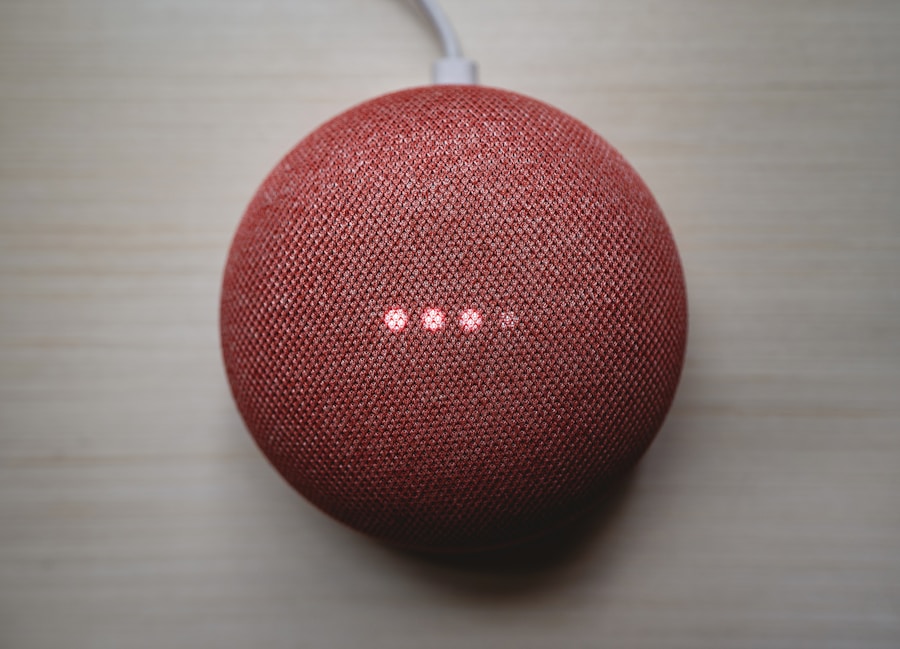The journey of speech recognition technology has been a remarkable one, marked by significant milestones that have transformed how humans interact with machines. The origins of this technology can be traced back to the 1950s when researchers began experimenting with basic voice recognition systems. Early systems, such as IBM’s “Shoebox,” could recognize a limited vocabulary of around 16 words.
These primitive systems relied heavily on analog technology and were limited in their ability to understand natural language, making them impractical for widespread use. However, the groundwork laid during this period was crucial, as it sparked interest and investment in the field of artificial intelligence and machine learning. As the decades progressed, advancements in computational power and algorithms led to more sophisticated speech recognition systems.
The introduction of Hidden Markov Models (HMM) in the 1980s marked a significant leap forward, allowing for better handling of variations in speech patterns and accents. By the 1990s, companies like Dragon Systems and Nuance Communications began to commercialize speech recognition software, enabling users to dictate text and control applications using their voices. The advent of the internet further accelerated development, as vast amounts of data became available for training machine learning models.
This culminated in the early 2000s with the emergence of cloud-based speech recognition services, which leveraged powerful servers to process voice data more efficiently than ever before.
Key Takeaways
- Speech recognition technology has evolved from simple voice commands to complex natural language processing, enabling more accurate and efficient interactions with devices.
- Speech recognition is revolutionizing the way we interact with technology, allowing for hands-free operation and seamless integration with various devices and applications.
- The impact of speech recognition on accessibility and inclusivity is significant, as it enables individuals with disabilities to access and use technology more easily.
- Advancements in speech recognition technology are transforming business and industry, with applications in customer service, data analysis, and automation of tasks.
- The future of speech recognition holds potential for innovative applications in healthcare, education, and smart home technology, enhancing convenience and efficiency in daily life.
- Overcoming challenges and limitations in speech recognition technology requires continued research and development to improve accuracy, language support, and adaptability to diverse accents and dialects.
- The ethical implications of speech recognition technology in privacy and security raise concerns about data collection, surveillance, and potential misuse of personal information.
- Tips for maximizing the benefits of speech recognition in daily life include training the system to recognize your voice, using clear and concise commands, and staying informed about privacy settings and data usage.
How Speech Recognition is Changing the Way We Interact with Technology
The integration of speech recognition technology into everyday devices has fundamentally altered our interaction with technology. Voice-activated assistants like Apple’s Siri, Amazon’s Alexa, and Google Assistant have become ubiquitous, allowing users to perform tasks hands-free. This shift towards voice interfaces has made technology more accessible, particularly for individuals who may struggle with traditional input methods such as keyboards or touchscreens.
For instance, a busy parent can set reminders or play music simply by speaking, freeing them from the constraints of multitasking. Moreover, speech recognition has enabled a more natural form of communication with devices. Instead of learning specific commands or navigating complex menus, users can engage in conversational interactions.
This evolution has implications beyond convenience; it fosters a more intuitive relationship between humans and machines. For example, in smart homes, users can control lighting, temperature, and security systems through voice commands, creating a seamless environment that responds to their needs. As technology continues to evolve, the potential for voice interfaces to enhance user experience will only grow, paving the way for more sophisticated applications in various sectors.
The Impact of Speech Recognition on Accessibility and Inclusivity

One of the most profound impacts of speech recognition technology is its ability to enhance accessibility and inclusivity for individuals with disabilities. For those with mobility impairments or conditions such as dyslexia, traditional input methods can pose significant challenges. Speech recognition provides an alternative means of interaction that empowers these individuals to engage with technology on their terms.
For instance, voice-to-text applications enable users to compose emails or documents without needing to type, significantly reducing barriers to communication. In educational settings, speech recognition tools have been instrumental in supporting diverse learning needs. Students with learning disabilities can benefit from dictation software that transcribes their spoken words into written text, allowing them to express their thoughts without the constraints of handwriting difficulties.
Furthermore, language translation features integrated into speech recognition systems can bridge communication gaps for non-native speakers, fostering inclusivity in multicultural environments. As these technologies continue to advance, they hold the promise of creating a more equitable digital landscape where everyone can participate fully.
Advancements in Speech Recognition for Business and Industry
| Year | Accuracy Rate | Usage in Business |
|---|---|---|
| 2015 | 85% | Limited to basic tasks such as call routing and simple data entry |
| 2018 | 90% | Expanded to customer service interactions and voice-activated virtual assistants |
| 2020 | 95% | Integrated into complex business processes such as transcribing meetings and analyzing customer feedback |
| 2022 | 97% | Utilized for real-time language translation and advanced voice-controlled systems in industrial settings |
The business landscape has also been transformed by advancements in speech recognition technology. Organizations are increasingly adopting voice-activated systems to streamline operations and enhance customer service. For example, call centers are utilizing speech analytics tools that analyze customer interactions in real-time, providing insights into customer sentiment and improving service quality.
This not only enhances the customer experience but also allows businesses to identify trends and areas for improvement. In industries such as healthcare, speech recognition has revolutionized documentation processes. Physicians can now dictate patient notes directly into electronic health record (EHR) systems, significantly reducing the time spent on administrative tasks.
This shift not only improves efficiency but also allows healthcare professionals to focus more on patient care rather than paperwork. Additionally, industries like automotive are integrating voice recognition into vehicles, enabling drivers to control navigation systems and make hands-free calls while keeping their attention on the road. These advancements illustrate how speech recognition is not merely a convenience but a critical tool for enhancing productivity across various sectors.
The Future of Speech Recognition: Potential Applications and Innovations
Looking ahead, the future of speech recognition technology is rife with potential applications and innovations that could further reshape our interactions with machines. One promising area is the development of more context-aware systems that can understand not just words but also the intent behind them. This could lead to more sophisticated virtual assistants capable of engaging in complex conversations and providing personalized recommendations based on user preferences and past interactions.
Moreover, advancements in natural language processing (NLP) are paving the way for multilingual capabilities within speech recognition systems. As globalization continues to connect people from diverse linguistic backgrounds, the ability to seamlessly switch between languages during conversations will become increasingly valuable. Additionally, industries such as entertainment could leverage speech recognition for interactive storytelling experiences or immersive gaming environments where players can communicate with characters using their voices.
The integration of artificial intelligence will likely enhance these capabilities further, allowing for more dynamic and responsive interactions.
Overcoming Challenges and Limitations in Speech Recognition Technology

Despite its many advancements, speech recognition technology still faces several challenges and limitations that must be addressed for it to reach its full potential. One significant hurdle is the variability in human speech patterns, including accents, dialects, and speaking styles. While modern systems have made strides in recognizing diverse voices, there remains a gap in accuracy when it comes to less common accents or languages with limited training data.
This can lead to frustration for users who find that their commands are not understood correctly. Another challenge lies in background noise interference, which can significantly impact the performance of speech recognition systems. In environments where multiple conversations occur or where ambient sounds are prevalent, accurately capturing spoken words becomes difficult.
Researchers are actively exploring noise-cancellation techniques and advanced signal processing methods to mitigate these issues. Furthermore, privacy concerns surrounding voice data collection and storage present ethical dilemmas that need careful consideration as technology continues to evolve.
The Ethical Implications of Speech Recognition in Privacy and Security
The rise of speech recognition technology brings with it a host of ethical implications related to privacy and security that warrant careful examination. As voice-activated devices become commonplace in homes and workplaces, concerns about data collection practices have emerged. Many users may not fully understand how their voice data is being used or stored by companies, leading to potential breaches of privacy.
Instances where voice recordings are inadvertently captured during conversations raise questions about consent and data ownership. Moreover, the potential for misuse of speech recognition technology poses significant security risks. For example, malicious actors could exploit vulnerabilities in voice-activated systems to gain unauthorized access to sensitive information or control smart devices within a home.
As such, developers must prioritize robust security measures and transparent data handling practices to build trust with users. Striking a balance between innovation and ethical responsibility will be crucial as society navigates the complexities introduced by this powerful technology.
Tips for Maximizing the Benefits of Speech Recognition in Daily Life
To fully harness the advantages of speech recognition technology in daily life, users can adopt several strategies that enhance their experience. First and foremost, familiarizing oneself with the specific commands and functionalities of voice-activated devices can significantly improve accuracy and efficiency. Many platforms offer tutorials or guides that outline how to optimize interactions with their systems.
Additionally, creating a conducive environment for voice recognition can yield better results. Reducing background noise and speaking clearly at a moderate pace can help ensure that commands are accurately understood. Users should also take advantage of customization options available within many applications; adjusting settings related to language preferences or voice profiles can enhance performance tailored to individual needs.
Finally, staying informed about updates and new features released by manufacturers can help users leverage the latest advancements in speech recognition technology effectively. As this field continues to evolve rapidly, being proactive about exploring new capabilities will enable individuals to maximize the benefits of this transformative technology in their daily lives.










Leave a Reply